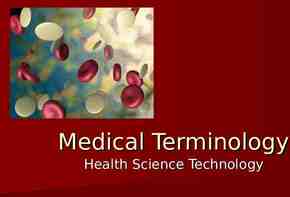Genes and Our Food Past, present and future
31 Slides1.82 MB

Genes and Our Food Past, present and future

Science is used to improve our food supply “And he gave it for his opinion, that whoever could make two ears of corn, or two blades of grass, to grow upon a spot of ground where only one grew before, would deserve better of mankind, and do more essential service to his country, than the whole race of politicians put together. “ Jonathan Swift in Gulliver’s Travels

Science is used to improve our food supply All food comes from living organisms Genetics can be used to improve the plants and animals we eat Many people are not aware of these facts “Ordinary Tomatoes Do Not Contain Genes, while Genetically Modified Ones Do”

“Ordinary Tomatoes Do Not Contain Genes, while Genetically Modified Ones Do” 52 Canada 33 45 United States 45 34 Austria 22 32 France 36 Italy 35 44 29 20 44 44 21 51 Netherlands 27 46 48 Switzerland 40 United Kingdom 0 10 39 Germany Sweden 15 20 22 24 30 21 31 38 40 22 60 80 Percent Response 1996 - 1998 False (Correct) Don't Know True 100

We have genetically modified food for thousands of years The earliest farmers and gardeners saved seeds of the very best plants to start the next growing season By doing this, they unknowingly selected plants with the more desirable genes Assyrian mural from 870 BC showing palm pollination

Domestication of corn 9000 Years Ago Teosinte Corn

Domestication of lettuce 4,500 Years Ago Prickly lettuce Leaf Lettuce

Domestication of carrot 1,100 to 300 Years Ago Queen Anne’s Lace Orange carrots appeared in Holland in the 1700s

Wild cabbage Brassica oleracea Ornamental kale Late 1900’s Kohlrabi Germany, 100 AD Kale, 500 BC Cauliflower 1400’s Broccoli Italy, 1500’s Cabbage, 100AD Brussel sprouts Belgium, 1700’s

Some crops never existed in nature Wheat, Triticum aestivum Triticum urartu X Aegilops speltoides 2n 14 2n 14 Triticum turgidum X 2n 28 2n 14 Triticum aestivum 2n 42 Aegilops tauschii

Biotechnology In Agriculture

Major uses of biotechnology Making maps of plant and animal chromosomes using technology developed for the Human Genome Project Using our knowledge to add new genetic information to plants and animals

How is this information obtained? Set of techniques that allow us to " read" genes

Old and New Approaches to Plant Improvement

Current Crops with Biotech Traits Commercial Products Benefits to Growers / Consumers Herbicide Tolerance - Lower grower cost (corn, soy, cotton, canola) - Reduced herbicide residues - Enables no-till - Simplicity / flexibility Insect/Corn Borer Resistance - Lower grower costs (corn, cotton, potato) - Higher yields - Simplicity - Reduced pesticide usage - Decreased molds

Current Crops with Biotech Traits Commercial Products Benefits to Growers / Consumers Virus Resistance - Lower cost - Higher quality foods Delayed Ripening - Higher quality food - Longer shelf-life (potato, papaya) - Less acres used products

Biotech Benefits and Risks Decreasing reliance on pesticides Insect resistance management Gene flow and outcrossing Non-target organisms Human, wildlife and environmental health Preserving genetic diversity in plants and animals Economic

Potential of crop biotechnology Potential products Specialty chemicals Pharmaceuticals Quality traits Agronomic traits 1995 2000 2005 2010

Genetically Enhanced Plants The Next Generation Situation So Far Future Trend Focus on improved farming Focus on improved processing "Thinking in crops" "Thinking in applications" Crop Customer Functionality of crops or components Source: The Boston Consulting Group; modified Customer needs

Biotech Foods and Health Enhanced protein and essential nutrients prevent disease Vitamin A to prevent childhood blindness Increased calories and nutrients to prevent malnutrition Increasing food availability by reducing spoilage golden rice

Healthier Foods Added Nutrients wheat rice Reducing Natural Food Toxins

Fighting Hunger Improving yields of food staples Controlling insects Controlling crop diseases bananas cassava sweet potato virus Greater salt tolerance

Food Security Increasing crop productivity to meet growing global food needs Increasing crop productivity of staple foods rich in protein and calories Increasing access to a healthy, diverse diet

What will the future bring?

Foods as Medicine Delivery System Vaccines human veterinary

Foods as Medicine Delivery System Benefits of food as a Drug Delivery System reduced expense low tech – easy to deliver reduced spoilage - no refrigeration Vaccines Enhanced protein and essential nutrients prevent disease

Other uses of biotech Over 100 drugs on the market developed with biotech Bioremediation Industrial biotech Improved enzymes in chemical, textile, pharmaceutical, metal, and energy industries Starch and grain processing Sweeteners Ethanol

Other uses of biotech Coffee is decaffeinated by solvent extraction Concern about safety and flavor Engineer to be decaffeinated Also can make uniform ripening

Other uses of biotech Nicotine-free tobacco Low lignin spruce trees for paper production

Industrial uses Cleaning industry Textile industry Detergent proteases Finishing cloth Better cotton fibers Paper and pulp industry Processing with biotech, environmentally friendly chemicals







